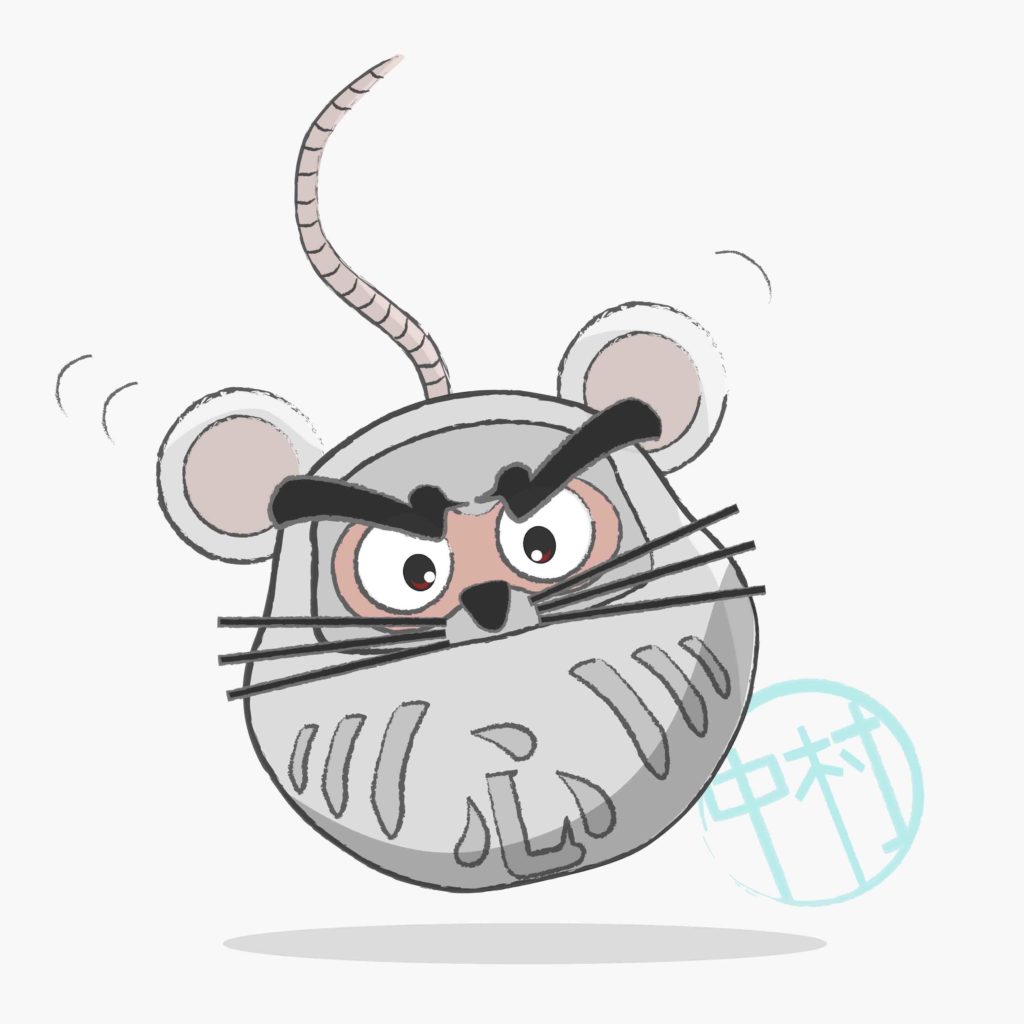Even with the Chinese New Year happening before Setsubun (the eve of spring and the new lunar year) in 2020, Kiku and Miko-chan enjoyed looking at the details of each zodiac animal.
“This year is the year of the Rat, which is also Mouse in Japan, as in the Japanese language there is no distinction between the two”, Miko-chan read aloud from the wall calendar. “The word for rat and mouse is nezumi (ねずみ), which can be written with the single character 鼠, but in the zodiac the character used is ‘ne’ which is written as ‘子’ , so the year of the rat is known as Nedoshi (子年).”
Miko-chan was excited for this new animal year, as she found mice very cute and she couldn’t wait to make a costume for dokdokiDaruma, who she fed with a huge breakfast of konpeito candy to keep him docile in readiness for the later cosplay.

Lucky signs for those born in the year of the rat/ mouse are:
Lucky numbers: 2, 3
Lucky colours: blue, gold, green
Lucky flowers: lily, African violet
Lucky directions: west, northwest, southwest
Rats are successful, clever, optimistic and quick thinking, and happy with a quiet life. They can sometimes come across as impolite, and as they like to save they can be regarded as a bit tight with money.
Notes:
The New Year in Japan is now celebrated at the beginning of January according to the Gregorian calendar (after the Japanese moved to this calendar in 1873), but Japanese people still mark the beginning of the lunar New Year with the setsubun rituals and customs. In Japan this used to be celebrated the day before Chinese New Year, but these days it has been fixed as February 3rd, rather than moving along with the date of the actual Chinese New Year, so some years they might take place in the wrong order, however this is not a problem as the beginning of the lunar New Year as celebrated in China is not a public holiday or really recognised, and only really celebrated in places like Yokohama’s Chinatown.
The zodiac animals are still recognised each year (for example on New Year greetings cards), and people also buy objects or themed items that represent the current year, such as hariko* figures, stationery and foods with special packaging.
*Hariko is the Japanese term for a folk craft similar to papier-mâché that differs from region to region – layers of washi paper are pasted either over or into a mould or over wooden frames before being painted with gofun (a type of whitewash made with the powder from oyster shells) and glue and then colour.


So nice to see old friends here! Beautiful and interesting as always.
Aw, thank you Jennifer! Glad you enjoyed it! X Joanna